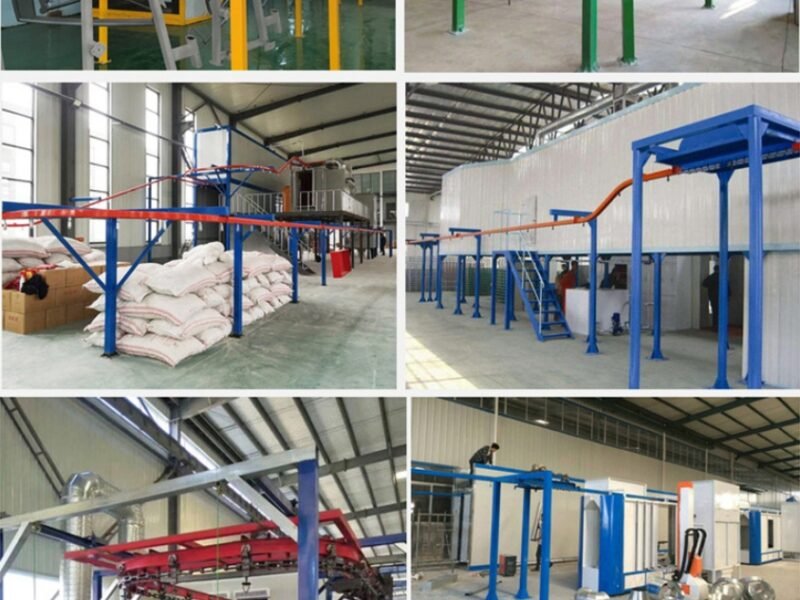
How to deal with excessive dust at the outlet of electrostatic precipitator?
How to deal with excessive dust at the outlet of electrostatic precipitator?
Excessive dust at the **outlet of an electrostatic precipitator (ESP)** indicates that the system isn’t capturing particulates effectively. This can lead to air pollution, regulatory violations, and damage to downstream equipment.
Here’s a breakdown of potential causes and solutions:
—
## 🔎 **1. Mechanical or Structural Issues**
**Possible Causes:**
– **Damaged collection plates** or **misalignment**
– **Warped or broken discharge electrodes**
– **Air leaks** in casing, doors, or expansion joints
– **Insufficient dust hopper evacuation** — re-entrainment of dust
**Solutions:**
✅ Inspect and repair collection plates and electrodes
✅ Check for and seal any air leaks
✅ Ensure hoppers are emptying properly — consider automatic systems
✅ Inspect inlet/outlet ductwork for bypassing or leaks
—
## 🔎 **2. Power Supply & Electrical Performance**
**Possible Causes:**
– **Low or unstable voltage/current** to electrodes
– **Flashovers** or **sparking** reducing collection efficiency
– **Transformer/rectifier (T/R) set malfunction**
– **Broken insulators or dirty insulator surfaces causing grounding**
**Solutions:**
✅ Inspect T/R sets for proper output
✅ Monitor voltage-current (V-I) curves for abnormalities
✅ Clean or replace insulators
✅ Tune power supply to maximize corona generation without causing arcs
—
## 🔎 **3. Gas Flow Problems**
**Possible Causes:**
– **Gas velocity too high** — dust carried past plates
– **Maldistribution** — flow bypassing collection zones
– **Changes in process conditions** — temperature, moisture, dust loading
**Solutions:**
✅ Measure flow rates — adjust dampers if needed
✅ Add flow straighteners or baffles
✅ Monitor process consistency (temperature and dust load changes reduce ESP performance)
—
## 🔎 **4. Rapping System Malfunction**
**Possible Causes:**
– **Ineffective rapping** — dust builds up and re-enters the airflow
– **Over-rapping** — shakes collected dust off plates into airflow
**Solutions:**
✅ Adjust rapping frequency and intensity based on dust characteristics
✅ Ensure rapping systems are working — inspect hammers and rods
—
## 🔎 **5. Process Chemistry or Dust Properties**
**Possible Causes:**
– **High resistivity dust** — hard to charge or remove
– **Moisture content too low or high** — affects resistivity
– **New fuel or material change** — altering dust characteristics
**Solutions:**
✅ Measure and control flue gas moisture if possible
✅ Consider conditioning agents (SO₃, ammonia) for high-resistivity dust
✅ Evaluate changes in raw material or process inputs
—
## ✅ **Monitoring and Maintenance Tips**
| Task | Frequency |
|——————————-|—————–|
| Inspect plates/electrodes | Monthly/Quarterly |
| Clean/Check insulators | Monthly |
| Check hopper evacuation | Weekly |
| Record and analyze V-I curves | Weekly |
| Flow measurement | Quarterly |
| Tune rapping system | Quarterly |
| Leak detection (smoke test) | Semi-annually |
—
## ⚠ **Bonus Tip:**
👉 If you’re dealing with *new* excessive dust suddenly, **check recent changes** — new raw materials, maintenance work, or power supply issues are often the cause.
—
Would you like help drafting an inspection checklist or flowchart for your ESP maintenance team? Or is there a specific model or dust type you’re dealing with (cement, steel, coal)?
electrostatic epoxy powder coating
electrostatic fluidized bed powder coating
electrostatic gun for powder coating
electrostatic painting powder coatings
electrostatic powder coating equipment
electrostatic powder coating gun
electrostatic powder coating line
electrostatic powder coating process
electrostatic powder coating system
electrostatic powder spray gun
electrostatic spray powder coating

